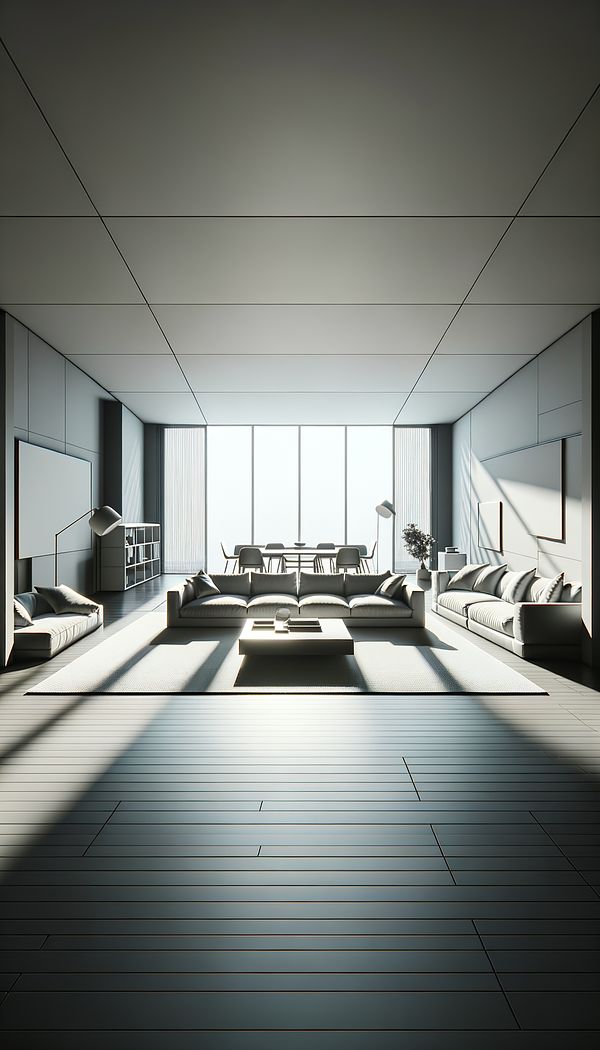What is Negative Space?
Negative space refers to the area around and between objects in a room.
Description
In the realm of interior design, negative space is a concept that plays a crucial role in the balance and aesthetics of a room. This term refers to the empty or open spaces around and between furniture, artwork, or other elements in an environment. Far from being merely 'empty', negative space is purposefully unoccupied, offering a visual rest and highlighting the pieces that occupy the positive space. By carefully considering negative space, designers can create a more harmonious and aesthetically pleasing environment.
The manipulation of negative space can dramatically alter the perception of a room. It can affect how spacious or cluttered a room feels, the flow of movement within the space, and where visual emphasis is placed. In minimalist designs, for example, negative space is often maximized to create a feeling of tranquility and simplicity. Conversely, a room with little negative space might feel cozy and intimate, but could also risk appearing cluttered if not balanced properly.
Understanding the relationship between positive and negative space is fundamental for any interior designer. It requires a keen eye for composition and spatial awareness. Mastery of this concept allows for the creation of environments that are not only functional but also emotionally resonant and visually appealing.
Usage
- In a minimalist living room, the area around a single, carefully chosen piece of furniture may serve as a deliberate negative space, emphasizing the furniture's form and function.
- In a gallery wall arrangement, the spacing between frames can be considered negative space, contributing to the overall balance and impact of the display.
- In an open-plan office, strategically placed furniture and open areas can be used to define different working zones while maintaining a sense of spaciousness.
FAQs
-
Can negative space be too much in a room?
Yes, too much negative space can make a room feel cold, uninviting, or unfinished. Balancing negative and positive space is key to achieving the desired atmosphere.
-
How does lighting affect negative space?
Lighting can dramatically alter the perception of negative space by casting shadows, highlighting certain areas, or creating visual depth. Proper lighting is essential in emphasizing or minimizing negative space as desired.
-
Is negative space only important in minimalist designs?
While negative space is a hallmark of minimalist design, it's important in all design styles. It contributes to the balance, rhythm, and proportion of any space, regardless of its aesthetic.
Practical Application
To effectively use negative space in interior design, start by decluttering and considering the functional layout of your space. Pay attention to the visual weight of objects, the flow of movement, and how areas of rest can benefit the overall ambiance. Experiment with different configurations and lighting to see how these elements affect the perception of space. Remember, the goal is to create a balanced environment that meets the needs of its inhabitants while being aesthetically pleasing.
-
Neutral ColorsNeutral colors are shades that don't show or are subdued in color, commonly serving as a versatile backdrop in design.
-
Complementary ColorsComplementary colors are pairs of colors that, when combined, cancel each other out to produce a grayscale color like white or black.
-
ColorfastColorfastness refers to the resistance of a material's color to fading or running.
-
Floor PlanA floor plan is a scale drawing that presents the layout of a space from above.
-
Concept StatementA concept statement articulates the vision and overarching theme for an interior design project.
